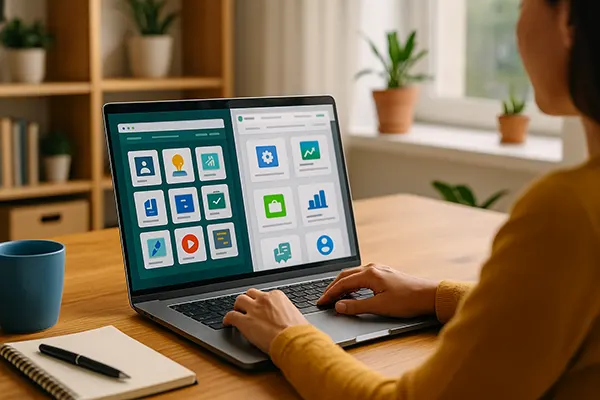
Micro-services via freelance bumpers: how to submit deliverables on Upwork / Fiverr to earn passive income
In 2025, digital freelancing has evolved beyond one-time projects into systems of passive earning. Micro-services on platforms like Upwork and Fiverr allow specialists to package their expertise into ready-made deliverables that continue generating income without daily management. The key lies in creating value-driven digital assets and understanding how to license and resell them efficiently.
Understanding micro-services and freelance bumpers
Micro-services are compact, result-oriented tasks such as logo templates, automation scripts, or copywriting frameworks. They provide buyers with immediate value and freelancers with predictable scalability. A “freelance bumper” refers to a service bundle or asset package that can be reused and resold multiple times under licensing terms.
By 2025, Upwork and Fiverr have standardised workflows for digital product listings. Freelancers can now attach pre-made deliverables — design systems, data sheets, or code snippets — turning each sale into a low-effort transaction. This shift enables consistent monthly income even during inactive periods.
Unlike traditional freelancing, where each project is custom, micro-services focus on repeatability. Once created, the asset can be monetised repeatedly. The approach fits designers, writers, developers, and consultants who wish to transition from time-for-money models to scalable systems.
How micro-services become passive income
The process begins with identifying work that can be productised. Examples include SEO audit templates, UX kits, or automated spreadsheet dashboards. Each item is prepared once but sold indefinitely. The freelancer retains intellectual property while granting commercial usage rights to buyers.
To maintain income flow, freelancers use automation tools integrated with Upwork and Fiverr, such as auto-delivery systems and subscription-based offers. These ensure steady visibility and repeat purchases without manual involvement.
Successful passive earners regularly update assets according to new trends. For instance, an AI prompt library or a social-media planner can be refreshed quarterly, ensuring continued demand and high client satisfaction ratings.
Strategies for submitting deliverables on Upwork and Fiverr
Both marketplaces emphasise compliance and originality. To build a sustainable profile, freelancers must verify the authenticity of their files and clearly define usage rights. This prevents disputes and establishes a trustworthy reputation — a critical factor for passive earnings.
On Upwork, freelancers can attach deliverables via “Project Catalog”, where each listing has defined scope, price, and turnaround. Fiverr uses “Gig Packages” that include predefined assets. The key is consistency: professional presentation, transparent pricing, and ongoing optimisation of keywords and visuals.
In 2025, buyers prefer freelancers who combine automation with quality control. Embedding video previews or step-by-step guides significantly increases conversion rates. Transparent communication in descriptions also boosts algorithmic visibility.
Practical tools and automation for freelancers
Automation software such as Zapier, Notion integrations, or Fiverr Workspace can streamline deliverable management. For example, completed work can automatically upload to cloud storage and deliver upon order approval. This ensures round-the-clock operation without manual supervision.
Freelancers can also deploy analytics dashboards to track downloads, refunds, and performance trends. Such data supports price adjustments and helps identify profitable asset categories.
Finally, using copyright registration services like Creative Commons licensing or blockchain verification adds legal protection. This transparency attracts professional clients and maintains long-term trust within the freelancing ecosystem.

Building authority and sustainability in freelance markets
Passive income through micro-services depends on personal branding and consistency. Profiles that demonstrate expertise, verified results, and client reviews naturally achieve higher visibility. The combination of clear structure and niche focus ensures long-term stability.
Freelancers are encouraged to document their workflow through blog updates or short video tutorials. Sharing authentic insights enhances E-E-A-T signals — experience, expertise, authoritativeness, and trustworthiness — which align with Google’s quality guidelines.
By reinvesting a portion of profits into marketing or content promotion, freelancers can scale organically. Collaboration with agencies and cross-platform selling (e.g., Gumroad or Etsy for digital files) expands the earning potential even further.
Future outlook for passive freelancing in 2025
The freelance economy continues to diversify. Artificial intelligence now assists in task automation, pricing prediction, and client targeting. As a result, experienced freelancers can build micro-enterprises from previously one-off gigs.
Ethical transparency and skill diversification will shape the next era of remote work. Clients seek reliability, not just speed. Those who maintain verified processes and offer measurable outcomes will dominate the passive-income niche.
Ultimately, the future of micro-services lies in intellectual ownership. The freelancers who design systems that continually deliver value — even when they are offline — will transform gig platforms into sustainable revenue ecosystems.


